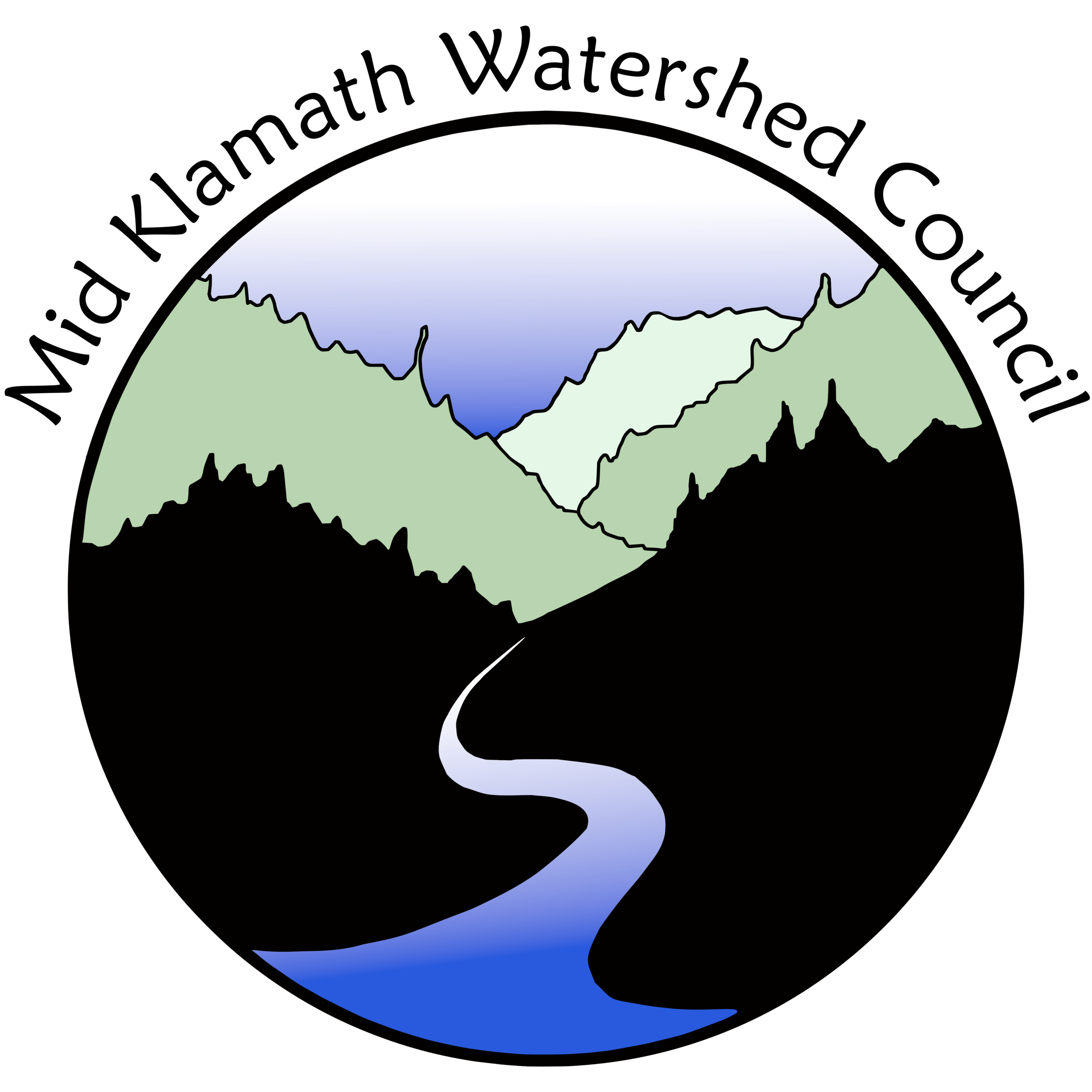Adventures of the Summer Youth Crew
by Carol Earnest
The Mid Klamath Watershed Council welcomed four youth interns to our staff in June 2021, Xa-‘tle T’sing (Star) Lincoln, Madison Rilea, Lily Stender, and Dean Wellik. Hailing from Hoopa, Happy Camp, Seiad Valley, and Arcata, their interests ranged from forestry, fisheries, fire, plants, and community enrichment projects. Intern coordinators met the challenge, and offered experiential workforce development in all program areas.
MKWC Youth Crew: (left to right) Xa-’tle T’sing (Star) Lincoln, Madison Rilea, Lily Stender, and Dean Wellik.
Because Klamath River fish are experiencing extreme challenges due to water quality and low flows, the youth interns worked consistently with the fisheries crew to improve thermal refugia areas in cold water tributaries, as well as snorkel surveys to monitor fish population and health. These youth learned about Ceratonova shasta disease, water quality conditions, and the diminishing populations of Spring Chinook salmon, prompting two of the interns to develop independent projects around the current state of the Klamath fisheries. Xa-‘tle T’sing created an informational flyer about the Spring Chinook, “One of Our Favorite Foods, Put on the Endangered Species List”, and Lily Stender wrote an article about C. Shasta disease, “The Klamath Fish Crisis: A Devastating Fish Kill Consumes the Klamath River”. Both interns felt that more people need to know what is happening on the Klamath River, the inspiration behind both projects.
To combat fisheries habitat loss, interns worked with Karuk Tribe Department of Natural Resources and MKWC Fisheries to construct a Beaver Dam Analog (BDA) on Stanshaw Creek. BDAs are human made structures (made with natural materials) that simulate natural beaver dams, modifying stream flow to increase depth and connectivity. This increases habitat for fish and wildlife, and makes an enticing habitat for beavers to move in and take over maintenance of the dams in the future. Just two days after the Stanshaw BDA went in, the pool depth had increased by 11 inches, water was spilling over the BDA and reaching the thermal refugia mixing area. For the interns, after seeing dire water quality conditions for fish, it was rewarding to help implement a project with such quick results. “I feel like I am saving lives”, said Xa-’tle T’sing when asked about the fisheries work she was involved in during the internship.
MKWC interns work with Karuk DNR Fisheries to build a Beaver Dam Analog at Stanshaw Creek.
MKWC interns also worked with Dr. Frank Lake, of the Pacific Southwest Research Station’s Fire and Fuels program - as part of the Western Klamath Restoration Partnership’s forestry plot monitoring project, to evaluate treatment and fire effects in selected areas. Interns were trained by Lake in sampling protocol, and then assisted in the field to remeasure three units near Orleans. MKWC staff will continue to assist with the project throughout the summer and fall.
MKWC Youth Crew, MKWC field techs, and Dr. Frank Lake at a remeasurement plot.
And if that all wasn’t enough, the interns pulled thousands of high priority invasive plants, assisted MKWC staff with summer camp events for local youth, and supported community garden spaces with maintenance, planting, and harvesting produce.
Throughout these six weeks of summer, we witnessed an intern overcome her fear of snorkeling in the river, so much so that diving was listed as her favorite internship activity. We were impressed to see an intern hone in on fisheries identification, methodically learning the differences between a juvenile Coho, Chinook, and Steelhead. We watched two interns practice presenting a habitat lesson over and over, perfecting their rapport before presenting to a group of young students at summer camp. They were a hard-working, inspired and inspiring crew from start to finish. We can’t wait to see what they will do next!



